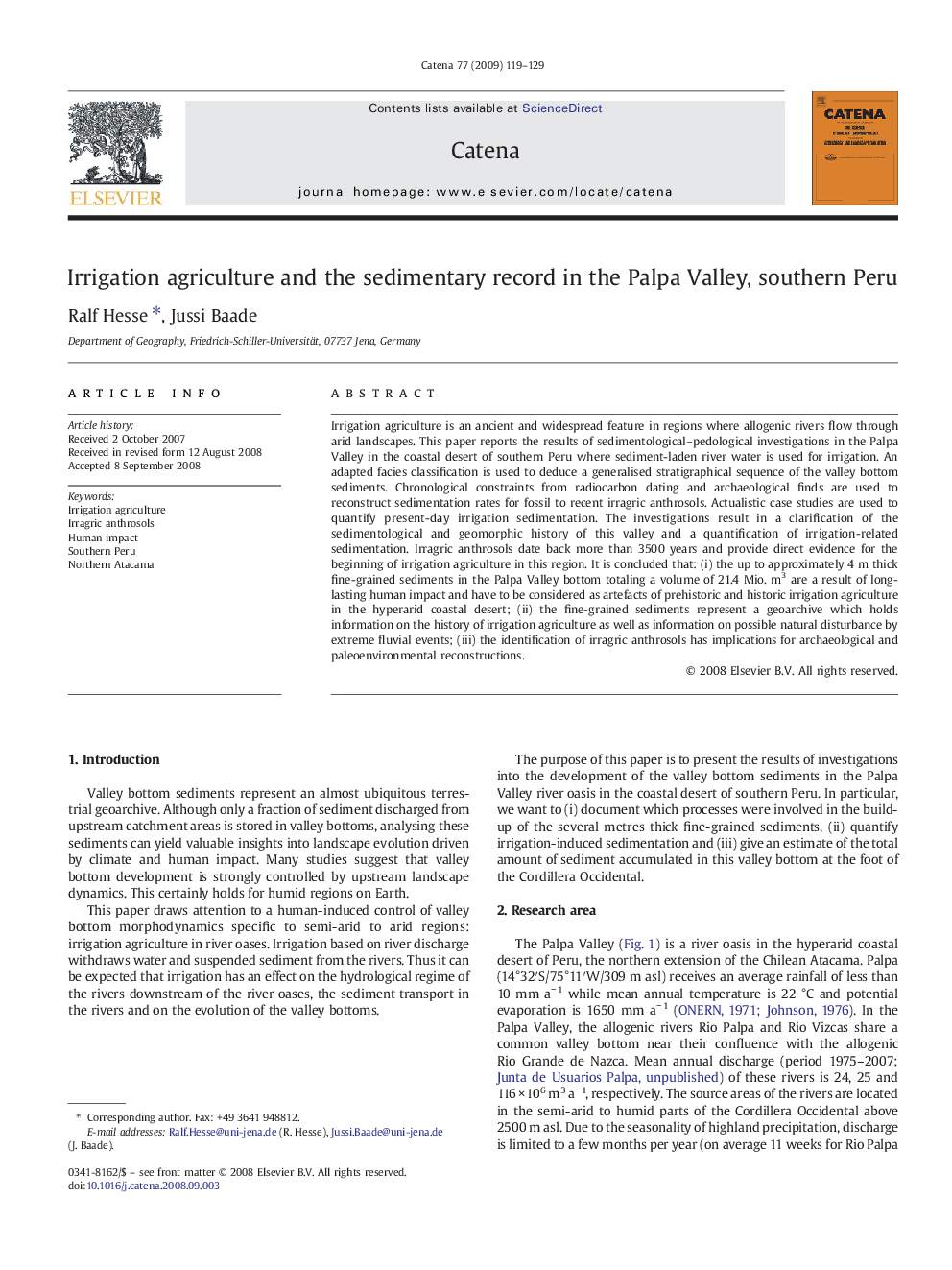| Article ID | Journal | Published Year | Pages | File Type |
|---|---|---|---|---|
| 4572308 | CATENA | 2009 | 11 Pages |
Irrigation agriculture is an ancient and widespread feature in regions where allogenic rivers flow through arid landscapes. This paper reports the results of sedimentological–pedological investigations in the Palpa Valley in the coastal desert of southern Peru where sediment-laden river water is used for irrigation. An adapted facies classification is used to deduce a generalised stratigraphical sequence of the valley bottom sediments. Chronological constraints from radiocarbon dating and archaeological finds are used to reconstruct sedimentation rates for fossil to recent irragric anthrosols. Actualistic case studies are used to quantify present-day irrigation sedimentation. The investigations result in a clarification of the sedimentological and geomorphic history of this valley and a quantification of irrigation-related sedimentation. Irragric anthrosols date back more than 3500 years and provide direct evidence for the beginning of irrigation agriculture in this region. It is concluded that: (i) the up to approximately 4 m thick fine-grained sediments in the Palpa Valley bottom totaling a volume of 21.4 Mio. m3 are a result of long-lasting human impact and have to be considered as artefacts of prehistoric and historic irrigation agriculture in the hyperarid coastal desert; (ii) the fine-grained sediments represent a geoarchive which holds information on the history of irrigation agriculture as well as information on possible natural disturbance by extreme fluvial events; (iii) the identification of irragric anthrosols has implications for archaeological and paleoenvironmental reconstructions.
